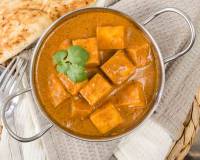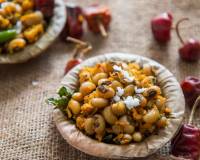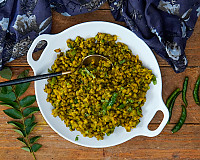One of the most basic tenets oft-repeated when discussing weight loss, healthy diets and clean eating is maintaining a High-Protein-High-Fibre intake. This typically means lowering the intake of carbs and upping the intake of protein and fibre in the daily diet. This is known to keep you feeling full for longer, reduces cravings and yet ticks all the right boxes in terms of daily nutritional requisites.
It is well-established fact that low-carb diets are effective for weight loss, but these diets usually fall short on one essential requirement – ie fibre. Dietary fibre is what helps fill your stomach, enables smooth digestion and keeps your system clean and free of bacteria. Many high-protein, low-carb foods are low in fibre and so it is essential to maintain a balance is all three groups.
1 - Understanding Proteins
Proteins are the essential building blocks of healthy bodies. Proteins are what help build muscles, repair damage and handle the wear and tear that our muscles and organs undergo, in order to function normally. Consuming a protein-rich diet means you will feed it less carbs, so it is forced to burn existing fat reserves for energy, rather than craving sugars or carbohydrates. The best sources of proteins are known to be meat, chicken, poultry, fish, eggs and dairy products. But vegetarians and vegans needn’t worry. Tofu, beans, nuts, seeds, pulses and lentils are equally healthy sources of protein.
2 - Understanding Fibre
The component of fruits, vegetables and grains that don’t nutritionally contribute to our bodies, and are typically passed through the system is called fibre. Though it has little nutritional benefit, it is exceedingly important to balance our diets with enough fibre. Insoluble fibre is what helps aid digestion and helps bind your waste to make it easier to pass through the digestive tract. And then there is soluble fibre that sticks to cholesterol, preventing it from being absorbed by the bloodstream. It increases absorption of carbohydrates, maintains optimum bloodsugar levels and fights heart disease. Cereals, brown rice, whole wheat and whole grain foods, certain fruits and vegetables are rich in insoluble fibre, whereas beans, oats, and most other fruits and vegetables are rich in soluble fibre.
3 - How Does Consuming Food High In Proteins And Fibre Enable Healthy Weight Loss?
The fundamental truth is food that is rich in fibre is usually low in calories, because most of it is passed through the system as waste. It also fills you up for longer periods of time because it soaks up all the moisture in your body, like a sponge. Proteins are the healthiest food group that directly impact the way our body functions, giving us energy and allowing normal processes to occur uninterrupted, minus the extra calories.
4 - High-Protein-Figh-Fibre Diets For Diabetics
A diet rich in proteins and fibre is usually the doctor’s recommendation for diabetics. But a fibre-rich diet not only helps patients already diagnosed with diabetes, but also cuts an average person’s risk of developing type-2 diabetes by nearly a fifth. There’s no better way to ensure you are guarded from diabetes than to include these food groups in abundance, in your daily consumption of food. A fibre-rich diet helps control blood sugar from spiking. It helps increase good cholesterol (HDL), and decrease triglycerides and bad cholesterol (LDL) that has a host of other implications in keeping several diseases at bay.
When it comes to proteins, it is important to ensure that you’re not overdoing animal protein. Not consuming enough fruit and vegetables, can cause constipation and a lack of essential nutrients. Too much protein can also overload your kidneys. So it is important to balance the intake of healthy proteins with plenty of fruits, vegetables and whole grains, and ensure you’re drinking plenty of water. This basically adds the much required fibre, as well as water for the smooth functioning of the system.
Browse this category of healthy, diabetic-friendly recipes that are best suited for those looking to switch to a diet of high protein and high fibre intake.
5 - Tips To Start Increasing Protein And Fibre In Your Diet
Its quite easy to start getting healthy habits into your diet. By starting simple and taking the following small steps, you can slowly begin to alter your intake.
- Plenty of vegetables. Go with the season, try and incorporate many different coloured vegetables and widen the variety of vegetables you consume.
- Lots of fruit. Eat fresh fruit, juice them, put them in salads and do whatever it takes to consume them raw, fresh, with the skins and pulp intact as far as possible.
- Whole grains. Consciously choose the whole, unrefined, unprocessed form of any grains that you consume. Oats over breakfast creal mixes, whole wheat bread over sliced white bread, multi grain atta over processed atta are easy ways to bring whole grains into your kitchen. Be extra cautious when you are shopping, and make the right choices.
- Pulses, legumes nuts and seeds. These are basic, everyday things we consume, not knowing the immense benefits they give us. Pulses, seeds and nuts are great source of proteins, but since they are loaded with carbs it is essential to moderate the amount consumed.
- Keep the skins on. When consuming certain fruits and vegetables that can be had with the skins on, choose to do that. Whether building a salad or making juice, this adds bulk to the food we ingest and allows more fibre through.
- Non starchy vegetables. Vegetables like corn, carrots, peas and potatoes, while high in fibre also come loaded with additional carbs. Choosing non-starchy vegetables like leafy greens, celery, tomatoes and cauliflower helps add fibre minus the carbs.









